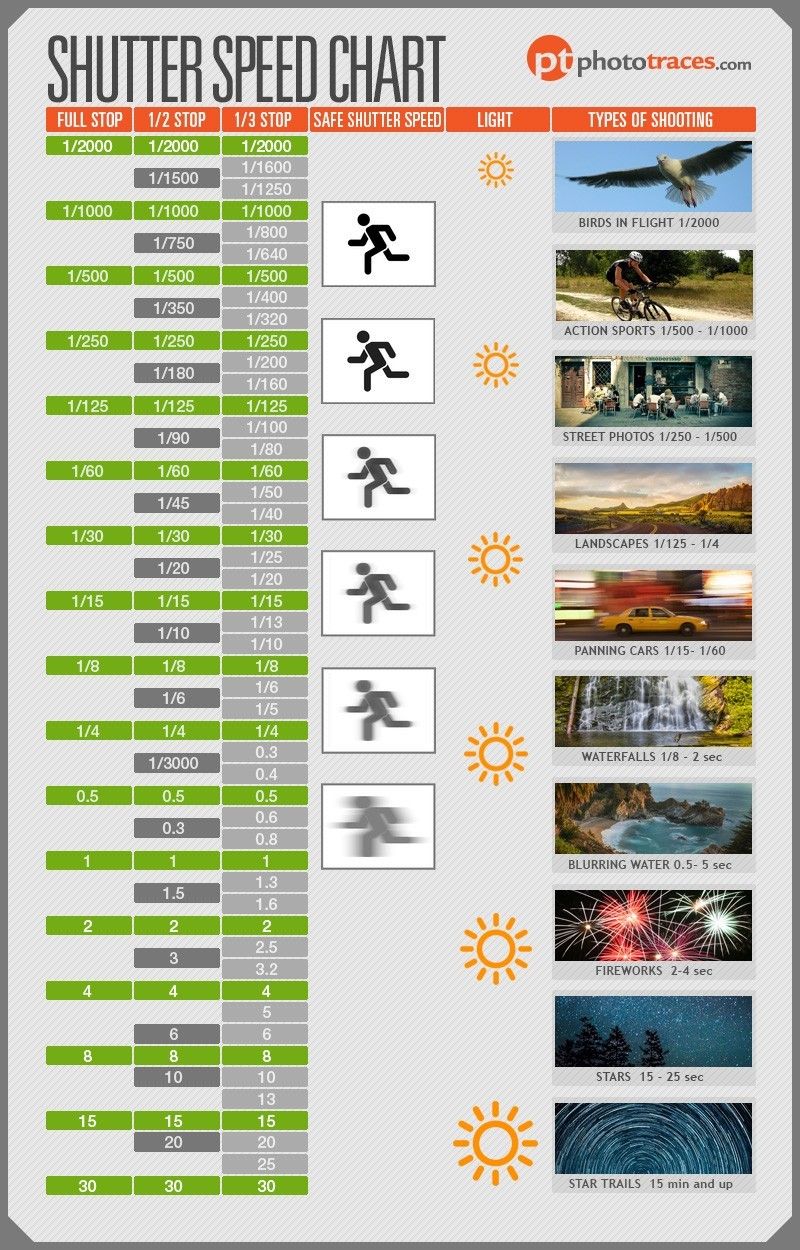

In Program mode, you can simply shift the combination of aperture and shutter speed with a spin of the camera's control dial.

#F stop and shutter speed iso
You can even use the Auto ISO option to let the camera handle that choice of sensitivity too. It's a similar story with Shutter Priority mode: you set the shutter speed, and the camera attempts to match this with an appropriate aperture. If you decide to change the aperture, the camera will adjust the shutter speed accordingly to maintain the same exposure. Once you set an aperture in Aperture Priority mode, for example, the shutter speed will be set automatically. Which combination you choose is down to the look you want to achieve: do you want a large depth of field or a shallow one? Do you want moving objects to be razor-sharp or have motion blur? That's a lot to think about.ĭon't panic! If you choose to shoot in one of the semi-automatic modes, the camera does most of the donkey work for you. Because the shutter speed has been reduced by four stops (1/25 - 1/50 - 1/100 - 1/200 - 1/400), which means less light is being captured, the aperture has to increase in size by four stops (f/16 - f/11 - f/8 - f/5.6 - f/2.8) to allow more light in - otherwise the picture would be four stops darker. It's all about balance: if you increase one of the three settings that control the exposure (aperture, shutter speed or ISO) then one or both of the other settings have to decrease by an equivalent total to maintain the same overall level of exposure.įor example, an exposure of 1/25 sec at f/16, ISO 100 is equivalent to an exposure of 1/400 sec at f/2.8, ISO 100.

#F stop and shutter speed manual
The semi-automatic exposure modes - Aperture Priority, Shutter Priority and Program - give you more control over how you expose the shot, each in a different way while Manual mode gives you full responsibility over aperture, shutter speed and ISO.Īlthough there might be a preferable exposure, there are a number of ways in which to achieve it. In the camera's automatic and scene modes, that's about as far as it goes. This is usually expressed in the order of a shutter speed value at a given aperture and ISO - say 1/60 sec at f/8, ISO 200. Once you activate the camera meter by half-pressing the shutter release, the camera will suggest an exposure based on the brightness of the area being metered.

The relationship between the range of apertures available on a lens is similar, but the numerical sequence is more confusing: the fact that f/5.6 is one stop smaller than f/4 but one stop larger than f/8 takes a bit of getting used to. ISO is similarly clear-cut, with an ISO of 400 one stop more sensitive than ISO 200, but one stop less sensitive than ISO 800. However, the same 1/50 sec shutter speed exposes the sensor for half the time of a shutter speed of 1/25 sec. For instance, a shutter speed of 1/50 sec is one stop slower than 1/100 sec, which means the sensor is exposed for twice as long. The three camera settings that give you control over the exposure - aperture, shutter speed and ISO - can each be measured in stops. Decrease it by one stop, and the exposure level is halved. Increase the exposure by one stop, and the camera sensor receives twice the level of exposure. Understanding exposure in photographyĮxposure - allowing light to hit the camera sensor to record an image - is measured in what's commonly referred to as 'stops', with each stop representing either double or half the level of exposure of the adjacent stop. Now, let's take a look at some of the common questions new photographers have about exposure. Photographers now have more control over exposure than ever before. It's also worth remembering that at one time, shutter speed and aperture were the only exposure variables you could change from one shot to the next as the ISO was set by the type of film you were using, but the introduction of digital cameras has made it possible to change ISO on the fly rather than unloading film or switching bodies.


 0 kommentar(er)
0 kommentar(er)
